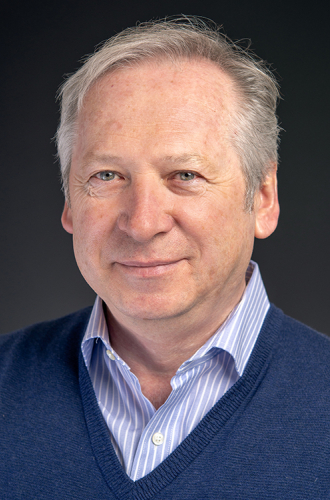-

-
Karol Lang
Professor
Department of Physics
Jane and Roland Blumberg Professorship in Physics (Holder)Experimental particle physics, High energy physics, Neutrino physics, Neutrinoless double beta decay, Particle detectors R&D-
Ph.D., University of Rochester (1985)
Research Interests
High Energy Physics
Research Activities:
Neutrino Oscillations (FNAL E701, MINOS)
Deep Inelastic Neutrino Interactions (FNAL E616, FNAL E701)
Rare Kaon Decays (BNL E791, BNL E871)
Searches for Axions (SLAC E141)
Deep Inelastic Electron Scattering (SLAC E140)
Neutrinoless Double Beta Decays (NEMO-3, Super-NEMO)
Particle Detectors and Nuclear Medical Imaging InstrumentationI am experimental particle physicist and faculty at the University of Texas at Austin. My research focuses on studies of neutrinos. I am involved in the neutrino program at Fermilab (http://www.fnal.gov) and at the LSM (http://www-lsm.in2p3.fr/) in France.
At Fermilab, I am involved in the MINOS and MINOS+ (http://www-numi.fnal.gov/index.html) experiments which measure neutrino oscillations using a NuMI (http://www-numi.fnal.gov/index.html) beam and two detectors. The on-axis Near Detector is located about 1km from the proton target at Fermilab, and the Far Detector was built 735km away in the Soudan Underground Laboratory (http://www.hep.umn.edu/soudan/brochure.html) in Northern Minnesota. MINOS has set some of the most stringent constraints for the "atmospheric" neutrino mass splitting and mixing, reported in 2013 (http://journals.aps.org/prl/abstract/10.1103/PhysRevLett.110.251801/). The search for appearance of electron-neutrinos in the muon-neutrino NuMI beam has also yielded some of the first hints for θ13 and later reported these appearance results (href=http://journals.aps.org/prl/abstract/10.1103/PhysRevLett.110.171801/) on the full MINOS data set.
Recently, MINOS has published results that use together all MINOS beam and atmospheric data in a three-flavor analysis framework. These combined results (http://journals.aps.org/prl/abstract/10.1103/PhysRevLett.112.191801) set the most precise value for the atmospheric mass splitting to date.
Currently, MINOS is taking data with the NuMI beam optimized for the off-axis NOvA experiment. The experiment is now called MINOS+. In addition to high-statistics testing of the disappearance of muon neutrinos at higher energies (4-8 GeV rather than 1-5 GeV), the experiment has unprecedented sensitivities to non standard neutrino interactions, sterile neutrinos, and large extra dimensions. MINOS+ will continue through FY2016...
At Laboratoire Souterrain de Modane (href= http://www-lsm.in2p3.fr/) in France, I am involved in the NEMO-3 (http://nemo.in2p3.fr/nemow3/) experiment and its future re-incarnation SuperNEMO. These are experiments designed to search for neutrinoless double beta decay which, if observed, would determine that neutrinos are Majorana particles (i.e., that neutrinos and antineutrinos represent the same fundamental field). NEMO-3 has recently published results on a search for a neutrinoless double beta of Mo-100 (http://journals.aps.org/prd/abstract/10.1103/PhysRevD.89.111101/). The lower limit on the half-life for this process gives some of the tightest upper bounds on the effective Majorana neutrino mass mββ.
I am also involved in the NOvA experiment at Fermilab, and in the future long baseline neutrino project, recently reformulated as DUNE and LBNE. These experiments will continue improving precision of neutrino and antineutrino oscillation parameters and should ultimately yield constraints on the neutrino mass hierarchy, the θ23 octant, and the δCP angle of the Pontecorvo-Maki-Nakagawa-Sakata matrix and possibly resolve the mass ordering and neutrino CP problem (see., e.g., http://www.sciencedirect.com/science/article/pii/S2405601415000978/).
I usually conduct particle detectors R&D, most recently of large water Cherenkov detectors, as recently described in http://arxiv.org/abs/1504.08330/.
Teaching
I often teach introductory physics tailored for pre-meds, biology, and chemistry majors (PHY 317K and PHY 317L). I also teach Modern Physics (or "Junior") Laboratory course (PHY 353) and Advanced (or "Senior") Laboratory course (PHY 474).
Every semester I give lectures on particle radiation detectors as a quarter part of the Physics of Sensors class (PHY 386K).
I strongly believe and support education through research. This is why I have been always engaging many undergraduate students in my research activities. This has led many of them to their successful pursuit of graduate careers or excellent employment opportunities after graduation.
-
Selected Publications
Future prospects for measurements of mass hierarchy and CP violation, K. Lang, Nucl. Part. Phys. Proc. 260, 183 (2015).
Observation of Seasonal Variation of Atmospheric Multiple-Muon Events in the MINOS Near and Far Detectors, P. Adamson et al. [MINOS Collaboration], Phys. Rev. D 91, no. 11, 112006 (2015).
Combined analysis of muon-neutrino disappearance and electron-neutrino appearance in MINOS using accelerator and atmospheric neutrinos, P. Adamson et al. [MINOS Collaboration], Phys. Rev. Lett. 112, 191801 (2014).
Observation of muon intensity variations by season with the MINOS Near Detector, P. Adamson et al., Phys. Rev. D 90, no. 1, 012010 (2014).
Investigation of double beta decay of 100Mo to excited states of 100Ru, R. Arnold et al. [NEMO-3 Collaboration], Nucl. Phys. A 925, 25 (2014).
Search for Neutrinoless Double-Beta Decay of 100Mo with the NEMO-3 Detector, R. Arnold et al. [NEMO-3 Collaboration], Phys. Rev. D 89, 111101 (2014).
Electron neutrino and antineutrino appearance in the full MINOS data sample, P. Adamson et al. [MINOS Collaboration], “ Phys. Rev. Lett. 110, 171801 (2013).
Search for flavor-changing non-standard neutrino interactions by MINOS, P. Adamson et al. [MINOS Collaboration], Phys. Rev. D 88, no. 7, 072011 (2013).
Active to sterile neutrino mixing limits from neutral-current interactions in MINOS, P. Adamson et al. [MINOS Collaboration], Phys. Rev. Lett. 107, 011802 (2011).
Probing New Physics Models of Neutrinoless Double Beta Decay with SuperNEMO, 5. R. Arnold et al. [SuperNEMO Collaboration], Eur. Phys. J. C 70, 927 (2010).
-
- 1991 Outstanding Junior Investigator Award, High Energy Physics Office, U.S. Department of Energy
- 1992 Summer Research Award, University Research Institute, The University of Texas at Austin
- 2000 Faculty Research Assignment, The University of Texas at Austin
- 2005 Faculty Research Assignment, The University of Texas at Austin
- 2014 Faculty Research Assignment, The University of Texas at Austin
-














